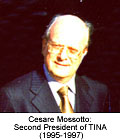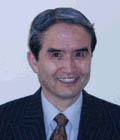|
History
The first TINA Workshop was held in 1990. This was the first occasion to
assess in the telecom community the common need for improving the way services are
designed and the common opportunity for tomorrow's services offering according to
increasing customer demands. It was also discovered that similar studies on a software
architecture were being conducted in many parts of the world.
These led in 1993 to the creation
of the TINA Consortium
for cooperatively defining a common architecture.
Some 40 telecommunications operators, telecommunications equipment and computer
manufacturers joined the consortium. A Core Team, consisting of engineers from member
companies, was created in New Jersey, USA, to join forces towards the achievement of a
common goal. |
 |
In Telecom 95 exibition, TINA-C Worldwide
Demonstrations confirmed the feasibility of the TINA principles. As the architecture began
to take shape, the people back in home companies began to build prototypes to validate the
architecture and provide their feedback to the Core Team.
 Towards the end of 1996, the TINA
Consortium entered a phase of consolidating its results with the goal of
making TINA real in the shortest possible time. Major progress was seen in different
areas, e.g., extension of the Service Architecture to new classes of services,
consolidation of the Network Resource Architecture and adoption of many features of the
DPE architecture by the industry. TINA-C has been interacting with standards bodies and
industry consortia, including ATMF, DAVIC, ITU-T, TMF and OMG in order to achieve harmony
of mutual specifications and avoid duplication of work. Towards the end of 1996, the TINA
Consortium entered a phase of consolidating its results with the goal of
making TINA real in the shortest possible time. Major progress was seen in different
areas, e.g., extension of the Service Architecture to new classes of services,
consolidation of the Network Resource Architecture and adoption of many features of the
DPE architecture by the industry. TINA-C has been interacting with standards bodies and
industry consortia, including ATMF, DAVIC, ITU-T, TMF and OMG in order to achieve harmony
of mutual specifications and avoid duplication of work. |
By the end of 1997, TINA-C has delivered a set of validated
architectural
specifications resulting from five years of collaboration, and decided to
continue
for three more years with a new structure, in order to resolve specifications for
particular business interactions within the overall commercial vision and facilitate
the market-driven adoption of the architecture. In the new structure, the
Consortium is driven by Working Groups, Special Interest Groups and
Contributing Projects from Member Compaines that will enhance the
architecture in selected areas such as Intelligent Networks, Internet, Mobility, Service
Management, DPE.
|
Since 1998, TINA-C has been conducting demonstrations of the use of the architecture in real business scenarios, refining and finalizing the architecture
specifications, and continuing to liaise with other standards bodies and fora.
|

Martine Lapierre:
Third President of TINA
(1998-1999) |

Sadahiko Kano:
Fourth President of TINA
(1999-2000) |
During
1999 and 2000, TINA-C has been delivering a set of harmonized
responses to Request for Proposals, in particular on IN to TINA
Adaptation Unit, on Compliance and Testing and on IP Control and
management. A strong, coordinated policy towards standardization
bodies has been adopted, in order to ensure the continuity of
TINA work after the termination of the Consortium on December
31, 2000. |
While TINA-C member companies have been
cooperating in defining common specifications, they have been
competing in developing and providing software packages conforming to
these specifications. Hence, TINA-C
has been characterized as :
A CO-OPERATIVE SOLUTION FOR A COMPETITIVE WORLD
With increasing globalization, a continuing
explosion in mobile services, the ever closer integration of voice, data and video and
widespread penetration of Internet, the global telecommunications marketplace has become
one of the fastest-growing, fastest-changing markets in the world.
The Internet has emerged as a key player of the multimedia age. Its impact parallels all
the developments in telephony and other traditional telecommunications. They use different
technologies and provide different features. Specifically, the internet technology largely
relies on intelligence in user terminals, while in the case of traditional
telecommunications, intelligence resides within the network. Developers of services over
the Internet directly benefit from the boost in computer power and software capability.
The strength of traditional telecommunications is high security, reliability and quality
of service. When integrated, these two technologies will offer an unprecedented
opportunity to provide versatile multimedia and information services and innovate the way
these services are created and provided.
Even within traditional telecommunications, there is no end to the emergence of new
services, for example: generalized mobile services, multi-media conferencing and VPN. Each
service requires new sets of communications capabilities. However, as the scale and
complexity of the marketplace continues to grow, many of these opportunities are now
turning into threats. The industry is seeing customer needs outstripping its ability to
deliver. It is seeing the cost of entry into the marketplace growing every year. And far
from evolving gracefully to accommodate new services and capabilities, it is being forced
into ever more expensive step-changes in infrastructure and underlying systems. In a world
already replete with a multitude of services, the addition of each of these intricate
services is a daunting challenge and can be a nightmare for those who create, deploy and
manage the service. If systems from multiple vendors are used, it is even more
problematic.
In the face of these developments, there are several questions to be answered. How can we
harness the new technical opportunity? How can we provide versatile multimedia services
over the Internet and traditional telecommunications networks? How can we keep in check
the potentially exponential increase in cost of creating, deploying and managing these
services? And, how can we incorporate flexibility in the service software for current and
future network technologies? These are the questions that many telecommunications
operators and equipment manufacturers have put on top of their agenda since the beginning
of the 90's. They believe that what is needed is a solution that takes a new approach, but
can also interwork with existing systems and standards. The answer is to define a new
software architecture that capitalizes on the latest advances in computer and
telecommunications technologies to rationalize the organization of complex software for
services and network management. The answer is TINA.
Basic Architecture Principles
TINA logically separates the high level
applications and the physical infrastructure from the need to directly communicate with
each other. This isolates the more stable Control and Management aspects from the very
dynamic technology thrust and commercial service needs, thereby creating an enduring
software Architecture.
TINA integrates all the control and management functions into a unified, logical software
architecture.
TINA is supported by a single Distributed Processing Environment (DPE). This means that
instead of being forced to reside on a particular system at particular geographical
locations, the control and management functions can be flexibily placed in the network.
A number of clear separation points, called Reference Points, are defined. They provide
for clear separation of the roles of each player in the industry and will allow each
player to enter the marketplace and flexibly expand its business.
For more information, refer to Principles of TINA |



